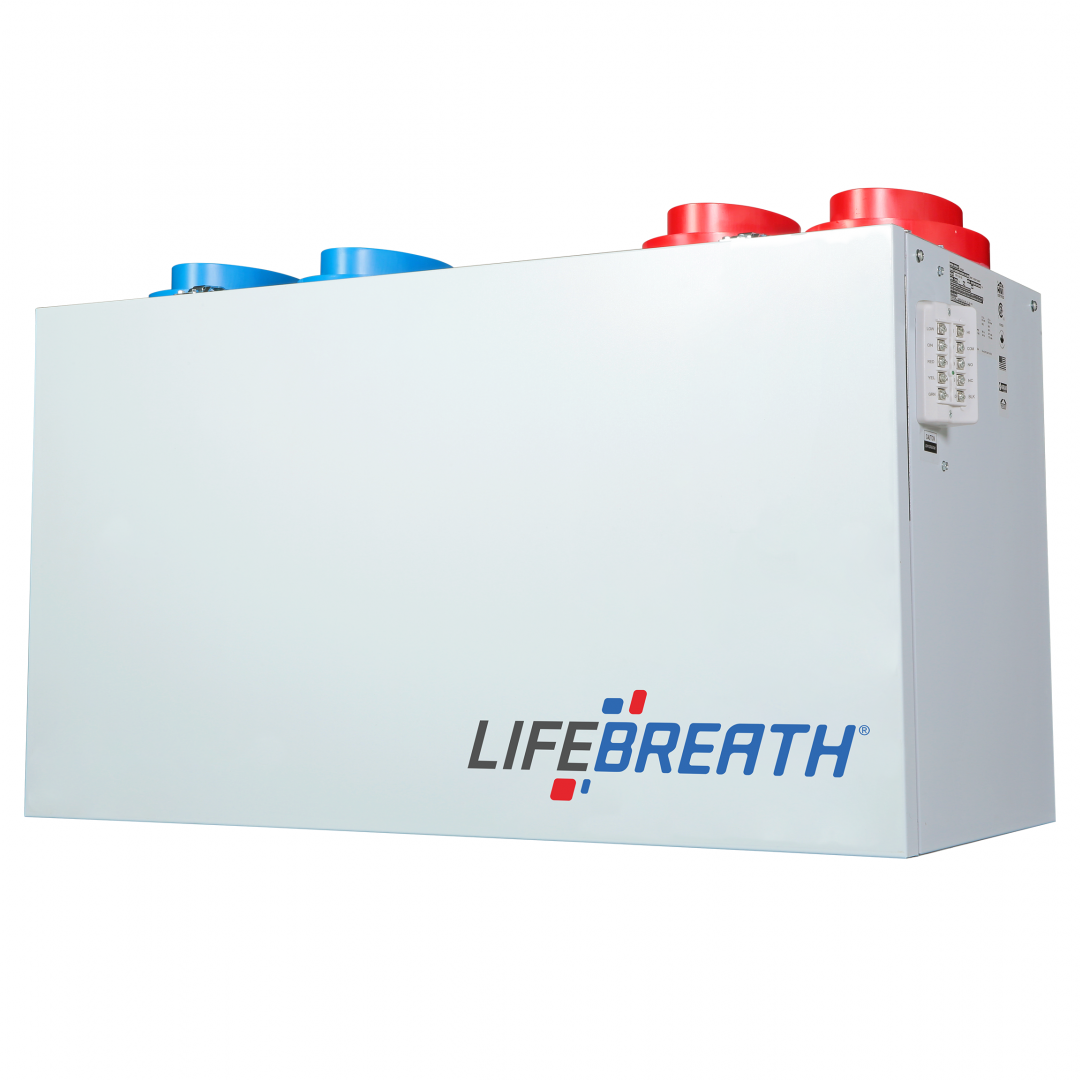Erv Hurd Wikipedia - What Are Energy Recovery Ventilators?
So, you might be looking for information about "Erv Hurd Wikipedia," perhaps curious about a particular topic or even a person. Well, as a matter of fact, when we talk about "ERV," it often points to something quite important for your home's air quality and how much energy you use. This piece will shed some light on what an ERV really is, giving you a pretty good idea of why these systems are becoming such a big deal in our living spaces.
You see, an Energy Recovery Ventilator, or ERV for short, is essentially a clever device that helps bring fresh air into your home without throwing your indoor temperature or humidity completely out of whack. It's a way, you could say, to keep things feeling just right inside, even when the weather outside is doing its own thing. This system also works to keep your energy bills from getting too high, which is, honestly, a nice bonus for anyone.
More and more, folks are looking at these systems because our houses are getting built to be very sealed up, which is great for saving heat or cool air, but not always the best for letting fresh air circulate. So, in some respects, ERVs step in to solve that puzzle, making sure you can breathe easily and comfortably, all while being a bit more mindful of the planet and your wallet.
- All About Madison Montag A Rising Star In The Entertainment Industry
- How Much Do Matt And Abby Howard Make An Indepth Analysis
- Is Tami Roman Still Married In 2024 A Deep Dive Into Her Relationship Status
- Elena And Preston Divorce A Comprehensive Analysis
- Anbal Marrero A Comprehensive Look Into His Life And Achievements
Table of Contents
- What Exactly Is an Energy Recovery Ventilator?
- Why Are ERVs Becoming So Important for Homes?
- How Do ERVs Help Save Energy and Keep You Comfy?
- Different Types of ERVs - Are They All the Same?
What Exactly Is an Energy Recovery Ventilator?
An Energy Recovery Ventilator, or ERV, is basically a clever piece of home equipment. It's a mechanical system, you see, that takes care of getting rid of old, stale air from inside your house and bringing in nice, fresh air from outside. This happens without, say, just opening a window and letting all your heated or cooled air escape. It's quite a bit more thoughtful than that, actually.
The main job of an ERV is to make sure your home always has a supply of clean, outside air. This is pretty important for a healthy living space. Think about it: our homes can sometimes trap all sorts of airborne things, like cooking smells, pet dander, or even just the air we breathe out, which tends to be full of carbon dioxide. An ERV helps swap that out for something much better.
But the real trick, you know, is that it does this air exchange while also being very smart about energy. It doesn't just push air around; it actually recovers some of the energy that would otherwise be lost. So, if it's warm inside and cold outside, the ERV takes some of that warmth from the outgoing air and uses it to warm up the incoming cold air. It's a rather efficient way to handle things, in a way.
- Exploring The Life And Legacy Of Gibson Makhanda
- Is Emmanuel Lewis Married Exploring The Life Of The Child Star
- Unveiling The Love Life Of Jason Robertson Who Is His Girlfriend
- Aubreigh Wyatt Merch Your Ultimate Guide To Fashion And Style
- How Tall Is Mike Tyson A Comprehensive Look At The Life And Career Of The Boxing Legend
This means you get the benefit of fresh air without your heating or cooling system having to work extra hard to get your home back to a comfortable temperature. It's a system that truly helps keep your indoor air feeling pleasant and fresh, which is, frankly, a big deal for day-to-day living.
Why Are ERVs Becoming So Important for Homes?
Our houses today are built quite differently than they used to be. They are, you could say, much more tightly sealed up. This is great for keeping warmth in during the winter and cool air inside during the summer, which helps with energy savings. But, conversely, it means that less fresh air naturally sneaks in through cracks and gaps, which older homes often had. So, in a way, while we're saving energy, we might be trapping less-than-ideal air inside.
This is where ERVs step in as a really helpful solution. Because homes are so sealed, the air inside can sometimes get a bit stuffy, or filled with things we'd rather not breathe in all the time. Things like cooking fumes, cleaning product smells, or even just the moisture from showers can build up. An ERV provides a constant, controlled way to bring in fresh air and push out the stale air, making sure your indoor air quality stays high.
It's not just about smells, either. Over time, the air inside a home can collect various tiny particles or even elevated levels of carbon dioxide from people breathing. This can make a living space feel less inviting, or even, arguably, make you feel a bit sluggish. An ERV addresses this by regularly refreshing the air, which contributes to a more pleasant and potentially healthier home atmosphere. It's quite a thoughtful addition to a modern dwelling.
Understanding ERV Systems - A Look Beyond Erv Hurd Wikipedia Searches
When you're looking up things like "Erv Hurd Wikipedia" and stumble upon information about ERVs, you're really getting into something that has a lot of practical benefits for everyday life. These systems are not just about moving air around; they are about creating a better living space in a smart way. For instance, they're pretty standard equipment for many of today's homes that are built to be very energy efficient.
Think about it: a house that's built to hold onto its conditioned air needs a way to get fresh air without wasting all that effort. An ERV does just that. It circulates air that has been treated, so you can breathe comfortably. This means you get the feeling of an open window without the actual energy loss that comes with opening one. It's a really neat trick, honestly.
The core idea behind these systems, which you might not always find immediately when you search for "Erv Hurd Wikipedia," is that they make your home a more pleasant place to be. They work quietly in the background, making sure that the air you're taking in is clean and that your home feels fresh, regardless of what the weather is doing outside. It's a subtle but powerful improvement to daily comfort.
How Do ERVs Help Save Energy and Keep You Comfy?
The way an ERV saves energy is actually quite clever. Imagine it's a cold winter day, and your house is warm and cozy inside. If you just opened a window for fresh air, all that lovely warmth would just fly out, and your heating system would have to work extra hard to get things warm again. An ERV avoids this by using a special component called a heat exchanger. This component allows the outgoing stale air to pass its warmth to the incoming fresh, cold air without the two air streams actually mixing. It's a bit like two rivers flowing side by side, sharing their warmth without becoming one.
Similarly, when it's hot and humid outside in the summer, and your air conditioning is keeping your home cool and dry, an ERV performs a similar trick. The heat exchanger, in this case, helps remove some of the heat and humidity from the incoming hot, damp air by transferring it to the outgoing cool, dry air. This means the air that enters your home is already somewhat cooled and dehumidified, which, naturally, means your air conditioner doesn't have to put in as much effort to get your home to the desired comfort level. This is, you know, a pretty big deal for keeping those energy bills in check.
Beyond just temperature, ERVs also help manage humidity levels. In many climates, especially during certain seasons, indoor humidity can be a real issue, making a home feel clammy or too dry. By exchanging moisture between the incoming and outgoing air streams, an ERV helps keep your home's humidity within a comfortable range. This contributes to a much more pleasant living environment, making the air feel just right, which is, honestly, a significant comfort factor.
The Core Components of an ERV System - What You Might Find on Erv Hurd Wikipedia
If you were to look up "Erv Hurd Wikipedia" for details on these systems, you'd likely come across mentions of their main parts. At the heart of any ERV system are a few key components that make all this air magic happen. Every ERV, you see, includes a heat exchanger. This is the part that allows the energy transfer to occur between the two air streams without them ever actually mixing. It's a pretty essential piece of the puzzle, really.
Then there are the fans. An ERV system typically has one or more fans that are responsible for pushing air through the unit. One fan pulls stale air from inside your home and pushes it out, while another fan draws fresh air from outside and brings it in. These fans work together to create a continuous flow of air, ensuring that your home is constantly getting a fresh supply. It's a simple but very effective setup, you know.
Some more advanced ERV systems, like those from LG HVAC, also include features like advanced filtration and CO2 control. The filtration helps clean the incoming air even more, catching tiny particles before they enter your home. CO2 control helps monitor the levels of carbon dioxide inside and adjusts the ventilation as needed, making sure the air stays fresh and crisp. These additions, you might say, really optimize the whole ventilation process, going a bit beyond just basic air exchange.
Different Types of ERVs - Are They All the Same?
When you start looking into Energy Recovery Ventilators, you'll find that they don't all come in just one form. The source text mentions that ERVs are available in different types, though it doesn't spell out exactly what those types are. Generally speaking, while the core function of exchanging air and recovering energy stays the same, there can be variations in how they are built, their capacity, and the specific features they offer. This means that what works best for one home might be a little different for another, which is, honestly, quite normal for home systems.
Some ERVs might be designed for smaller spaces, perhaps an apartment or a compact home, while others are built to handle the air exchange needs of much larger residences. The way they are installed can also vary; some might be part of a larger heating and cooling system, while others could be more standalone units. These differences mean that choosing the right ERV involves thinking about your specific home's needs and how it's built. It's not a one-size-fits-all kind of thing, in a way.
The important thing is that all ERVs aim to provide that fresh air while recovering energy. Whether it's a simpler model or one with all the bells and whistles like advanced filtration and CO2 sensors, the fundamental benefit remains: better indoor air quality and more efficient energy use. This variety allows homeowners to pick a system that fits their particular situation, which is, you know, a pretty good thing to have when making a home improvement decision.
Choosing the Right ERV - Insights Beyond Erv Hurd Wikipedia Entries
Picking the correct Energy Recovery Ventilator for your home might seem like a big task, especially if you're just starting with a general search like "Erv Hurd Wikipedia." But, as a matter of fact, it's become a bit simpler now that organizations like the Home Ventilating Institute (HVI) have put out clear guidelines and standards. These guidelines help make sense of the different options out there, allowing you to compare systems more easily.
When you're thinking about which ERV to get, you'll want to consider things like the size of your home and how many people live there. A larger home or one with more occupants will naturally need a system that can handle a greater volume of air exchange. You also might want to think about your local climate. If you live somewhere with very high humidity, an ERV that excels at moisture transfer might be a better fit. These are, basically, the practical considerations that guide your choice.
The goal is always to find a system that helps maintain a healthier indoor environment, keeps your home comfortable, and helps reduce your energy bills. With the information available and the standards set by groups like HVI, making an informed decision is more straightforward than it might seem at first glance. It's about finding the right balance for your home's unique characteristics, which, you know, is pretty important for long-term satisfaction.
- Jellybeanbrainz Leaks An Indepth Analysis Of Controversial Data Breaches
- Edgar Ramirez Wife The Woman Behind The Acclaimed Actor
- Is Max Amini Muslim A Deep Dive Into His Religious Beliefs And Background
- James Hetfield Girlfriend A Deep Dive Into The Life Of The Metallica Frontmans Relationships
- Leah Gotti Boyfriend Who Is He And What We Know About Their Relationship

LIFEBREATH 170 ERVD ERV - Top Port | Shop Air Exchangers

Pictures of Erv Hurd

Pictures of Erv Hurd